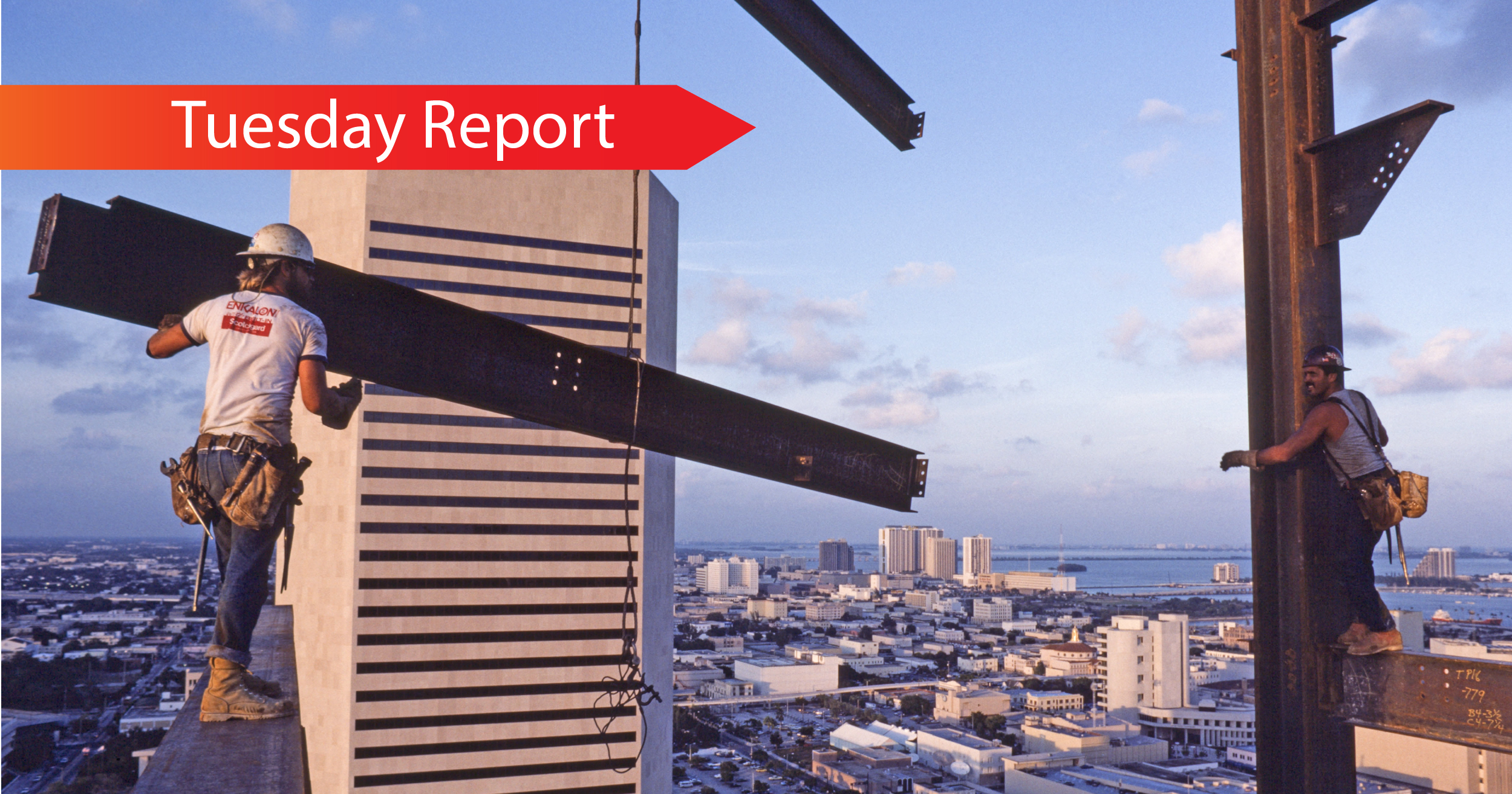In this world, there are many scary jobs
—and you might have one of them—
giving employee feedback.
It makes me truly dizzy just looking at a high-rise photo of construction workers casually hanging out on single steel beam, looking down at a 50-story drop—it truly takes my breath away.
I recently read about a 93-year-old guy injured from taking a fall from his roof while raking leaves (he recovered) and I commented to myself that I stopped getting on my roof a couple of decades ago—way too dangerous for me.
At the same time, if you are in a position at work where you give employee feedback on performance, you may be in a similar situation of danger—it is truly a highwire act.
There are a few instances where we want feedback. If a lady wears crooked lipstick all day and nobody says anything to her, she’s wondering why people let her go all morning looking like a circus clown, and she’s offended. If a guy shows up in a meeting with his pants unzipped, and nobody tells him to zip up, he wonders why. Yet people react instantly and negatively to almost anything when someone tells them that there’s something wrong with the way they do things.
Most of us would like to improve, but we want to figure out how to do that—all by ourselves.
Feedback in the workplace is even more important to the success of organizations now than it ever has been. Today it’s not just a matter of being a skilled professional, but it’s being able to deploy yourself as an strong member of a team that is coordinated, aligned, focused, and effective in achieving the team goal. It requires having timing and the right instincts and the ability to do quick mid- course changes, along with a tight bond with the team you’re working with.
Our organizational feedback system is broken—few organizations have good feedback systems. Here are some of the reasons why:
Annual Performance Reviews No Longer Work. In the past century, organizations measured progress in years—today a sprint toward the goal is measured in days or less. Our feedback system is a relic of the 20th Century. The approach in some organizations today of giving employees quarterly feedback is ineffective for the pace of today.
Supervisors Can’t Give Useful Feedback Information. Supervisors rarely connect with direct reports in a way that they see their performance on a daily basis. Their feedback is based on sporadic observation and hearsay. Supervisors lack the ability to observe performance. Managing by walking around is a relic of the past. Zoom is now the medium, remote workers are now standard, and casually meeting up with someone rarely happens. Water cooler conversations and coffee or drinks is not something likely to happen in the near future. And when it does happen again, it will likely still be in the mix of continued remote work. So it will be less frequent than in the pre-COVID era…long after COVID is gone.
Drive-by Coaching Is Way Too Limited….at Best. Casual, drive-by coaching works sometimes, but it is way too limited, episodic and unstructured. And most leaders who “think” they do frequent, highly effective “drive-by coaching” vastly over-estimate how often and how well they do it. Just ask their direct reports, if you have any doubts about that. They will typically answer your question about their boss’ great drive-bys with a deafening, “huh?” And even at its best, the drive-by approach fails to create the learning of new mindsets, skills and habits that stick. Today leaders must address individual feedback as part of team performance.
The New 360—The 21st Century Feedback Tool for People and Organizations
We all know that people get better with effective performance feedback—the most highly functional teams are the military and sports. They are based on feedback systems.
Yet how do you give feedback that people understand and act on?
The new 360 feedback system harnesses the knowledge of and insights of everyone in the organization to provide effective feedback that becomes the organization’s guidance system. It is revolutionary and game-changing.
Here’s why:
- The 360 provides realtime feedback—from the people you saw just yesterday. These are the people you sat in the meeting with yesterday. You received an email from them this morning. You interacted with them when you discussed a project on Zoom. You have information on your ability to communicate, their contribution to the team project, and your interactions with them and others.
- You have the data from everyone that works with them. You have information in the 360-degree circle—from managers, peers, and direct reports. Useful information can come from anywhere—from c-suite executives who guide the company to a person with no formal authority at all but who has observations that create critical feedback knowledge. It is the knowledge that’s almost impossible to get without the 360 tool.
- The 360 gives more than performance data—it creates a company strategy to succeed. A 360 creates performance data and identifies strengths and weaknesses. It also creates a profile of how teams and the whole organization are functioning together. You’ll see the mountains and valleys facing your organization, and you’ll see the cliffs before you suddenly go over the edge of one. You’ll not only create performance data, you will see, as you could see in no other way, what’s working, not working, or stalled along the way. You will have the data not to guess or run on hunches, but to move forward on concrete, undeniable data to manage the organization forward.
Providing feedback to employees can be as dangerous as a construction worker perched on a steel beam high above the street below. Feedback is dangerous and treacherous by the traditional means of annual performance reviews, catching someone in the hallway or on Zoom, or scheduling the ominous “visit” in a special called meeting.
Being a participant in a 360 feedback program can be stressful until everyone sees how the 360 works—questions that I want and need to know to manage my career, done in a safe and constructive environment. Once a person does a 360 they are glad to get the feedback and are hooked on the process. They want to grow and improve and move up in the organization as leaders with the platform they have for personal development.
Feedback is the most important tool that you have for running an organization. The accounting department can tell you at any moment about cash, sales, debt and provide all needed financial data. Sales tells you what is the status of how people are buying and consuming your product or service.
But feedback on performance is the black chasm of organizations; it depicts how they are fundamentally performing. Most information about performance in organizations is learned indirectly. Of course we have the numbers and stats, but who and how are team members moving or not moving the needle? 360 feedback lets people and the organization react in realtime, to anticipate issues rather than clean up disasters. Feedback truly makes star players, and the 360 creates the feedback.






